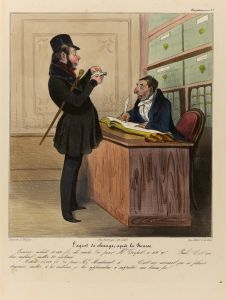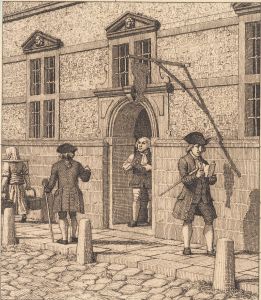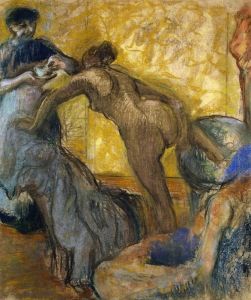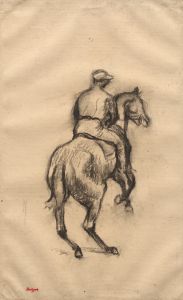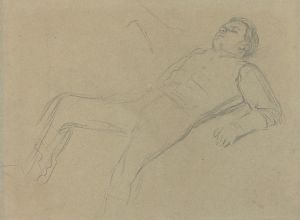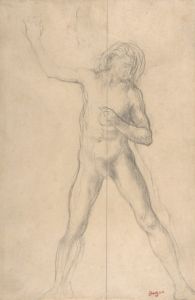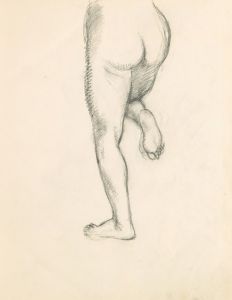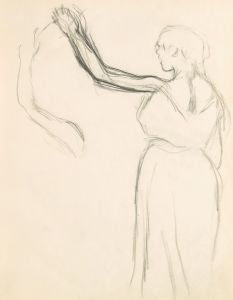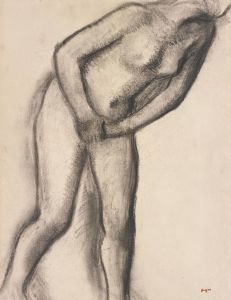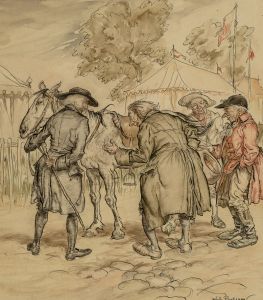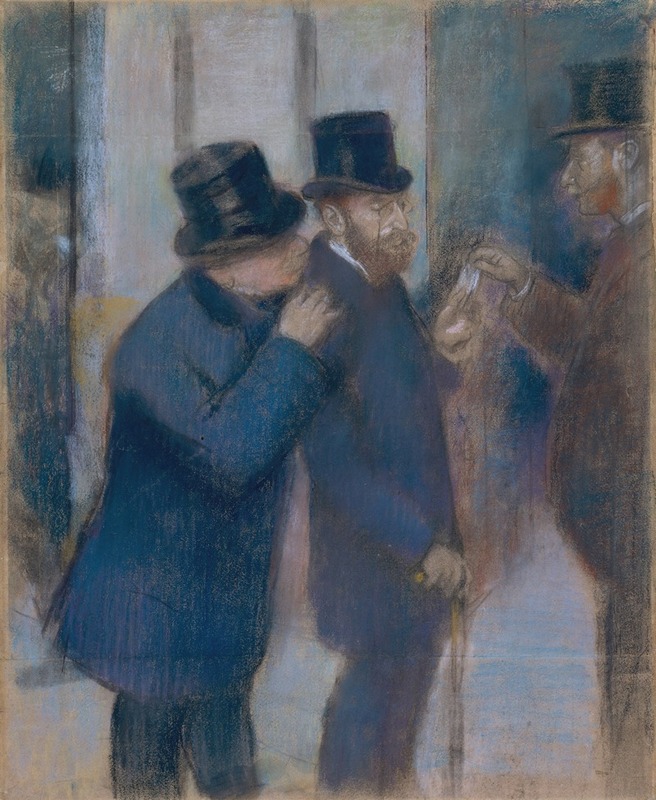
Portraits at the Stock Exchange
A hand-painted replica of Edgar Degas’s masterpiece Portraits at the Stock Exchange, meticulously crafted by professional artists to capture the true essence of the original. Each piece is created with museum-quality canvas and rare mineral pigments, carefully painted by experienced artists with delicate brushstrokes and rich, layered colors to perfectly recreate the texture of the original artwork. Unlike machine-printed reproductions, this hand-painted version brings the painting to life, infused with the artist’s emotions and skill in every stroke. Whether for personal collection or home decoration, it instantly elevates the artistic atmosphere of any space.
Edgar Degas, a prominent French artist known for his contributions to Impressionism, created the painting "Portraits at the Stock Exchange" in 1878-1879. This work is a notable example of Degas's interest in capturing contemporary life and the social dynamics of his time. Unlike many of his contemporaries who focused on landscapes and leisure activities, Degas often turned his attention to urban scenes and the professional world, offering a unique perspective on the modern life of 19th-century Paris.
"Portraits at the Stock Exchange" depicts a group of men engaged in conversation at the Paris Bourse, the city's stock exchange. The painting is characterized by its detailed observation of human behavior and interaction, a hallmark of Degas's work. The composition is carefully structured, with figures arranged in a way that suggests both the bustling activity of the stock exchange and the individual personalities of the men portrayed. Degas's use of light and shadow adds depth to the scene, highlighting the expressions and gestures of the figures.
The painting reflects Degas's interest in the themes of business and finance, which were central to the economic life of Paris during this period. By choosing to depict the stock exchange, Degas not only captured a specific aspect of modern life but also commented on the broader social and economic changes taking place in France. The men in the painting are dressed in the formal attire typical of the business elite, emphasizing their status and the importance of the financial world in shaping contemporary society.
Degas's technique in "Portraits at the Stock Exchange" demonstrates his mastery of both drawing and painting. He was known for his meticulous draftsmanship, and this work is no exception. The figures are rendered with precision, yet there is a fluidity to the composition that suggests movement and activity. Degas often worked from sketches and studies, and his ability to capture the essence of a scene with such economy of means is evident in this painting.
The painting is also notable for its psychological depth. Degas was interested in the inner lives of his subjects, and in "Portraits at the Stock Exchange," he conveys the concentration and intensity of the men as they engage in their financial dealings. The expressions and postures of the figures suggest a range of emotions, from confidence to anxiety, reflecting the high-stakes nature of their work.
"Portraits at the Stock Exchange" is housed in the Musée d'Orsay in Paris, which holds one of the most comprehensive collections of Degas's work. The painting is an important example of Degas's ability to blend realism with impressionistic techniques, capturing the complexities of modern life with both clarity and nuance. Through this work, Degas offers a window into the world of 19th-century finance, providing insight into the social and economic forces that shaped his era.





